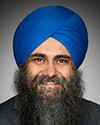Sure. Why not? I don't mean to be flippant about that, because I'm one of those odd Canadians who really doesn't skate well.
I think the most important thing to recognize is that every kid develops differently, so I think some of the most intelligent people around that are the parents. It's intuitive around what your child is capable of doing and not capable of doing, so let common sense prevail. If the kid is always falling down, now is not necessarily a good time to introduce him to sports where falling down is going to be an issue.
As far as equipment goes, everybody has a vested interest. Can we educate people in retail? It's really hard, because it's sort of a McDonald's mentality, and the turnover rate is astronomical.
With regard to websites, absolutely, we could do that. Play it Cool has some information around hockey helmets in particular, but certainly there are other sources out there. I would suggest to look for the ones that are non-profit organizations interested in kids' participation, and to stay away from the manufacturers, because obviously they have a vested interest.






